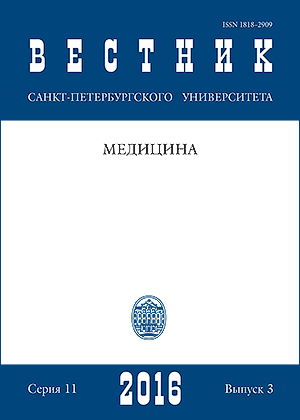Eponymous and no longer anonymous : hard life and long fame of Russian physicians . Proceeding II: Who was Doctor Taratynov ?
DOI:
https://doi.org/10.21638/11701/%20spbu11.2016.312.Abstract
The article is devoted to biographies of Russian physicians of the Silver Age (a period in the History of Russian culture between 1890 and 1917). They made early, significant and internationally recognized contributions to medical science and became eponymous, although social disasters of the twentieth century caused deep impact on their subsequent lives and careers so that their role was occluded from the global medical community. These proceedings are devoted to the biography and academic achievements of Nikolay Ivanovich Taratynov (1887–1919), known for first description of a local form of histiocytosis X (solitary eosinophilic granuloma). It was also he who first correctly hypothesized that Charcot-Leyden crystals belong to products of eosinophilic leucocytes. He also studied the role of the immune system in the regeneration of muscles, but he was killed during Civil War in Russia. The previous proceeding dealt with academic and personal biography of A. K. Zivert, known for first description of Siewert-Kartagener triad, and the subsequent proceeding will cover also biography of their contemporary S. S. Abramov, discoverer of primary idiopathic myocarditis. The contribution of these scientists to Medicine is reviewed in the context of historical epoch against the background of their different individual social choices and the fate of their families. Besides their eponymous descriptions, other medical innovations of these scholars are analyzed. Some previously unpublished materials from their family archives are presented, which witness to the possible existence of an unknown prototype for the main hero of the novel ‘Doctor Zhivago’ by B. L. Pasternak and for probable other priorities. The factors facilitating rapid development of theoretical and practical Medicine in the imperial Russia of the late 19th and early 20th centuries are discussed. One of them was definitely the fruitful activity of the Imperial Kazan University, which was at the top of its academic development during that period. The conclusion of the author is that in any epoch, even the most cruel and unfavorable one, creative activity is a means toward social immortality. Refs 19. Figs 12.
Keywords:
Nikolai Ivanovich Taratynov, Taratynov’s disease, eosinophilic granuloma, histiocytosis X, Charcot–Leyden crystals, Kazan University, History of Medicine, Civil War in Russia, Boris Leonidovich Pastenak, ''Doctor Zhivago
Downloads
References
References
Downloads
Published
How to Cite
Issue
Section
License
Articles of "Vestnik of Saint Petersburg University. Medicine" are open access distributed under the terms of the License Agreement with Saint Petersburg State University, which permits to the authors unrestricted distribution and self-archiving free of charge.




